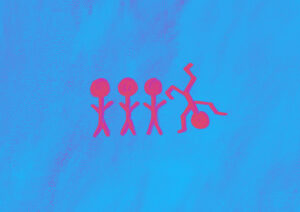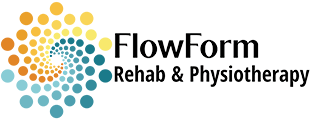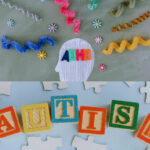Neurodiversity 2 of 7: My story

I have worked as a physiotherapist for the last 13 years and I’ve always been captivated by the more complex interactions between the mind and the body. I have always found myself asking “but why?”, digging deeper and deeper into the origins of physical pain and disease. It is because of this relentless questioning that I have, rather unceremoniously, stumbled upon the undeniable fact that the mind and body cannot be separated – they cannot be treated or even explained separately without taking the other into account. The way the human nervous system bridges this gap is fascinating, and so much more complex that I had been led to believe by my original medical training.
A few years after graduating, my research led me on an epic side-quest discovering the world of fascia – the connective tissue that structures the inner framework of the body, and, in ways that no university lecturer thought to mention earlier, is the entire reason there are physical reactions to mental-emotional processes in the body. Yes, there are chemical pathways too, but the physical pathway of connection between the mind and the body is the one that is much more interesting to me, because it is the one I can influence with my hands, and the one my patients can influence with their movements and breath.
Researching this pathway has led me into a much deeper understanding of complex issues like chronic pain and its related mental-emotional processes, and the physical consequences of anxiety, depression and trauma. The more I learnt, the more I realized that these types of patients did not benefit from the conventional physiotherapeutic methods I tried, and in fact often got worse from that approach. Being highly sensitive myself, I completely understood this, as I myself avoided visiting my colleague physiotherapists for treatments until absolutely necessary, because they would always cause me more pain and a very uncomfortable field of sensations within my body I now know to call
“nervous system dysregulation”. Over time, with more research and experience, I developed my own way of working with my patients that was a little more sensitive and a little more layered in complexity than my original methods. I now teach this approach to other physiotherapists and massage therapists as
“FasciaWork”, not because I have the type of qualifications that would set me apart as a lecturer of any kind, but simply because I felt these insights and results I was experiencing needed to be shared, if not for their merit in healing then simply for the fact that they don’t aggravate pain in the most sensitive of people.
This development in my work happened parallel to my own personal discoveries about how my nervous system works, and I now understand that I am neurodivergent – both autistic and ADHD, a combination often called AuDHD among the neurodivergent community (for no scientific reason except that it’s easier). The resources available for neurodivergent adults are limited, especially in our country, and the misconceptions that exist about these topics are rampant, greatly confusing and restricting people’s access to support and practices that would help them live better lives.
After having several people tell me that “you can’t be autistic – you don’t look anything like that autistic child I know”, and this after many months of working through Impostor Syndrome and scraping together the courage to tell people, I decided to do the brave (crazy?) thing of giving a public talk about this and help clear up some of these misconceptions. The first talk in Swakopmund was a raging success, and the second in Windhoek as well, and it was only after both talks and receiving so many messages from people telling me about their own experiences that I realized how valuable it is to speak openly about these topics.
There are so many neurodivergent people out there hiding their truth, pretending to be what they’re not and can never live up to, living with daily struggles as severe as chronic depression and repeated suicidal episodes, and many of them don’t even know that having a brain that works differently can be a natural part of themselves rather than something wrong with them. For me, and for many who have told me so, it feels like a massive weight falling off of one’s shoulders to realize that you are not alone, that you are not broken, that it’s not your fault, and that there are ways you can help yourself live with a little less anxiety, a little less burnout, and a little more connection and self-love. This is why I do what I do.
Read the next article in the series: Neurodiversity 3 of 7: Neurotypes & natural differences
Read the next article in the series: Neurodiversity 3 of 7: Neurotypes & natural differences
Resources
If any of this feels familiar to you, I encourage you to do more of your own research. When it comes to neurodiversity, it’s not about labeling yourself – it’s about understanding yourself. The resources below can help you get started.
One small word of caution: never label anyone else. Never tell your spouse/friend/brother/mother “I think you might be autistic”. It will not go down well. Allow people to discover themselves in their own time. Their neurodivergent brain is theirs, and theirs alone.
I put together a resource pack for neurodivergents to help them on their journey of self-discovery. If you are neurodivergent, or think you might be, or even if you’d simply like to learn more about it, download your free copy here: Neurodivergent Life: Simple Tools & Resources to Guide You Down the Rabbit Hole.
I also started a WhatsApp support group for neurodivergents since the public talks I gave, and this group has been a valuable space for sharing tools and helping each other understand and cope. Find the invite link here:
If you think you may be neurodivergent, take this online quiz to find out if you may have some neurodivergent traits: Neurodivergent traits Questionnaire NTQ (link button). This questionnaire is for self-understanding purposes only and does NOT serve as a diagnosis.
- Share:
You may also like




